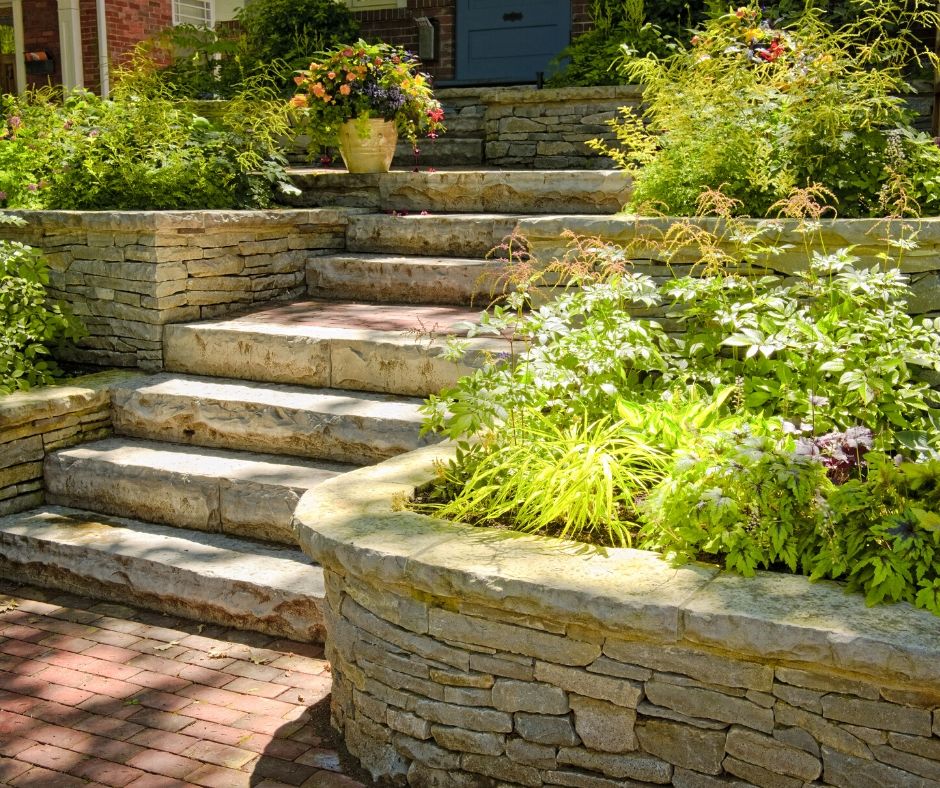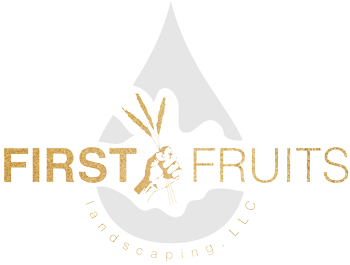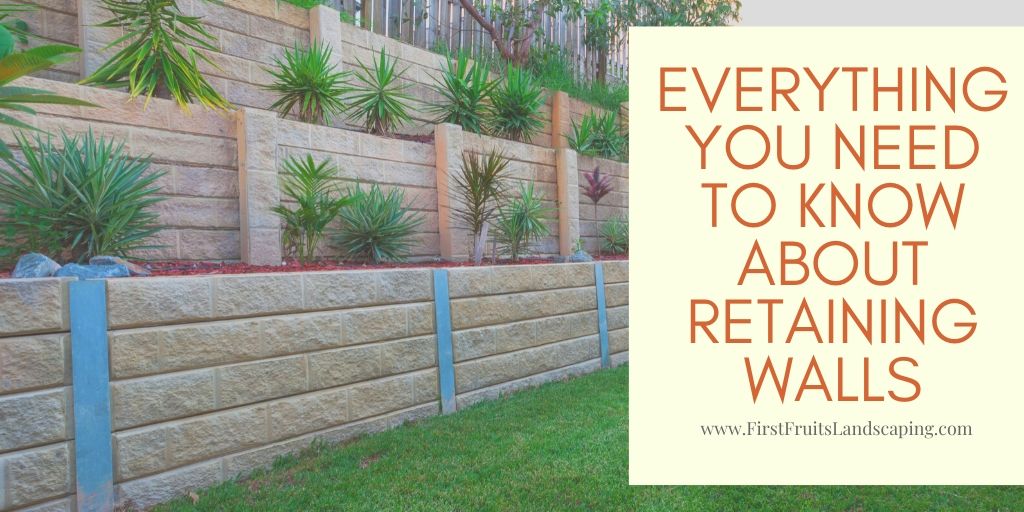Let’s talk about retaining walls. There’s a lot to discuss because no two retaining walls are exactly alike. There are used for different reasons, different methods, and different materials so let’s start at the beginning.
What is the purpose of a retaining wall?
Before getting into a retaining wall on your property let’s talk about the purpose of it. There are several different types of applications and retaining walls can be used to combat soil erosion and prevent or reduce flooding. It slows down the flow of heavy rainfalls and can control where the flow of rainwater goes on your property. It can be used for terraces and gardens and can be installed to create a flat usable area on a hill or slope. Whether using rock, pavers, or concrete, retaining walls can serve a variety of different purposes. If you have a fairly steep backyard, using retaining walls can create level areas to allow for more planting and help with soil erosion.
How do you know you need a retaining wall?
A retaining wall can be built purely for aesthetics but a lot of times it’s because of the location of the house of the foundation.
If your home is at the bottom of a hill or on a steep incline, you should consider installing a retaining wall. If you are concerned that the erosion of the hill around your home could impact the foundation, a retaining wall should be considered. Erosion can compact and uphill foundation.
A retaining wall can also be installed just for peace of mind. It can help prevent any sort of mudslide or erosion and give you a little bit of stability on your property.
What type of retaining wall should you install?
There are a lot of different materials that can be used as a retaining wall. You’ll want to choose materials that you can work with easily. They need to provide structural support and wall blocks are typically the best option. To keep the bottom row of blocks pushing outward, you’ll want to bury the lowest section of the retaining wall and move up from there. For the best results, the first course of blocks should be perfectly level. If it’s unbalanced from the foundation, the entire wall will also look slanted or leaning.
You can use large rocks, pavers, poured concrete, or even logs that have been treated, however, these are not the best for flowerbeds or gardens as the toxins can leak into the soil. We prefer a hardscape medium such as rocks or paver stones.
What you need to know about retaining walls
 When considering a retaining wall as far as materials and location you want to incorporate the wall into your lifestyle. Even though this is just for holding back soil, you want something that’s attractive and adds to the general aesthetics of your backyard.
When considering a retaining wall as far as materials and location you want to incorporate the wall into your lifestyle. Even though this is just for holding back soil, you want something that’s attractive and adds to the general aesthetics of your backyard.
Do you want it to curve? Well you do want level retaining walls they don’t necessarily have to be straight. You can dress up the design and add a little more texture by using a combination of uneven stone, flat stone, and rock.
Most retaining walls are no higher than about 4 feet but we can create larger walls as long as they do not break any local codes or zoning laws.
Have you considered terracing? From a lower grade you can gradually step up the retaining wall to reach a greater slope adding for a unique slight offset with each change.
Starting with a solid base. We want to dig out several inches below grade and compacted to level it. Any filler such as gravel will need to be added before the stones or blocks are placed. This is one of the most crucial points as it creates the foundation and structure for the entire wall.
Consider drainage. If your retaining wall has a slope where water can collect, you may need additional drainage at the base. We can add gravel and a fabric-covered drainpipe at the base to prevent clogging. By setting this up now, you won’t have to worry about drainage in the future.
Backfill adds support. We will add backfill as we go to support the successful layers. As we add new blocks or stones, we will backfill to match the level tamping in and compacting the soil as we go.
Retaining walls are something we love to do because it completely transforms a backyard or front yard. Your curb appeal will thank you, your soil and drainage will thank you, and you’ll have a wonderful terraced addition to your landscape.
For more information about retaining walls, give us a call. We can provide you with a quote, talk through some of your ideas, and creates a beautiful and practical permanent structure on your property.

